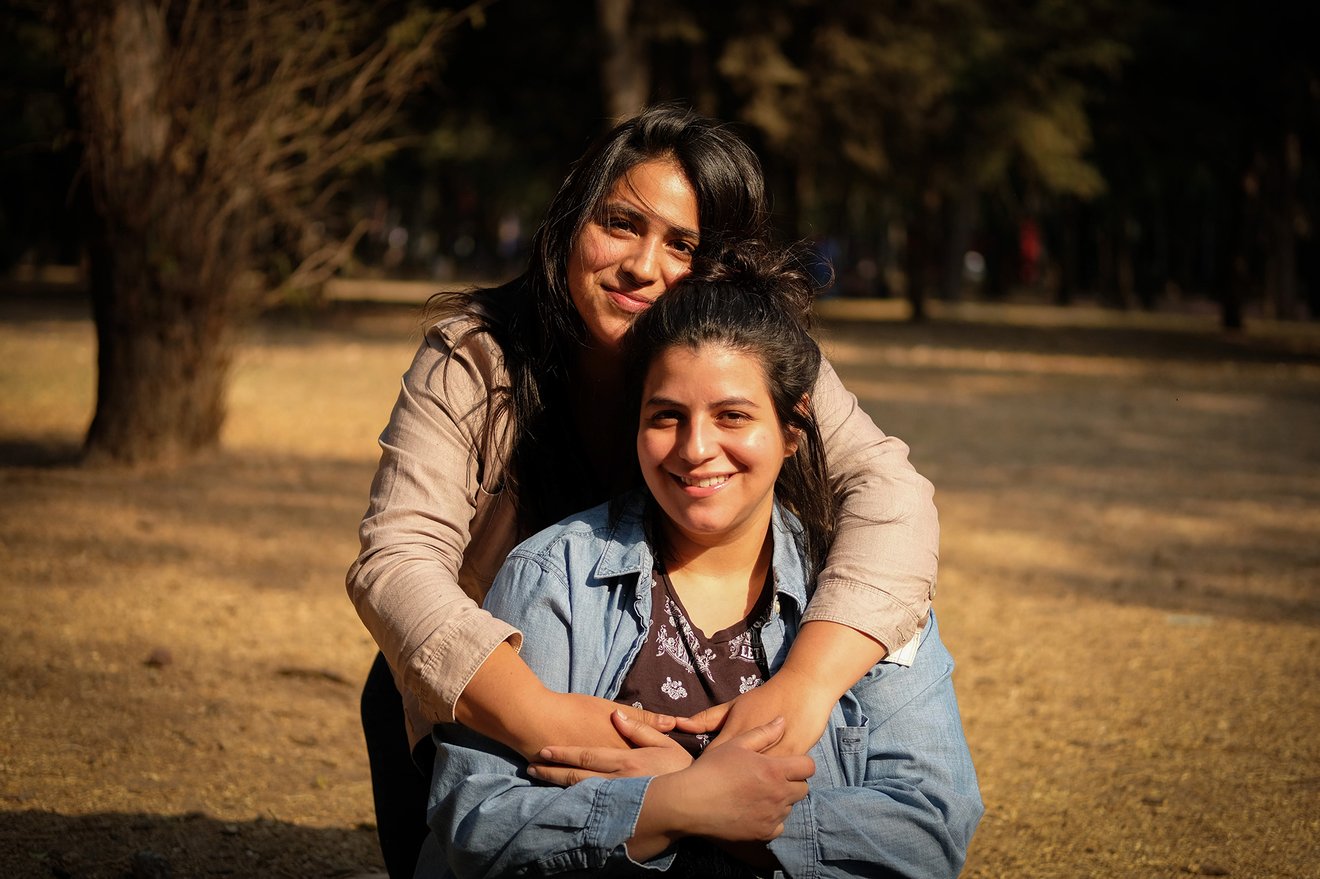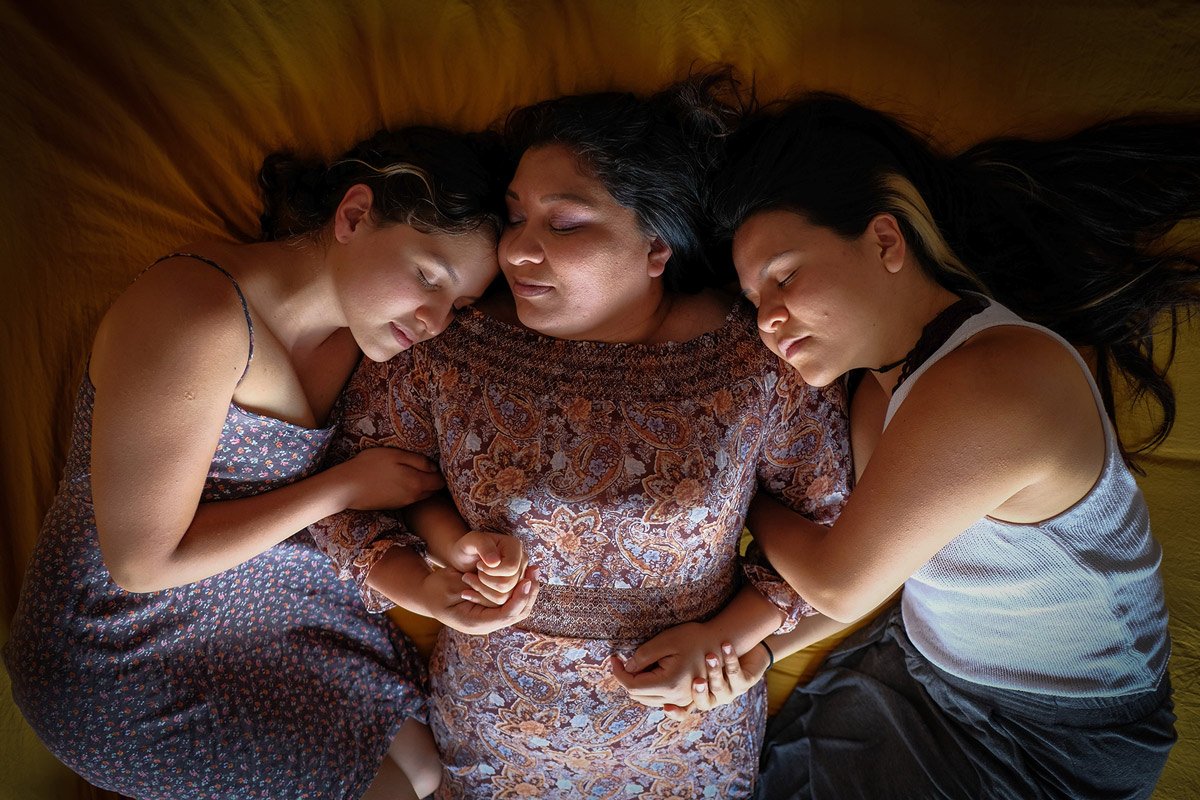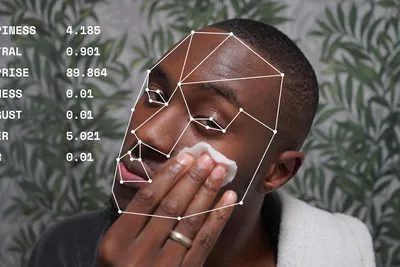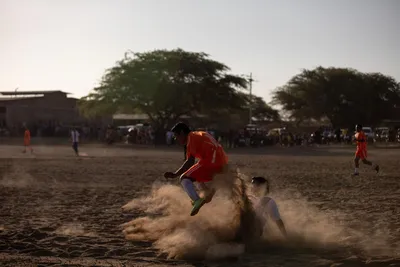Have you ever wondered how you can tell a story in a different way? I'm sure you do it all the time. As photographers we are constantly thinking about how we can improve our work and how to stand out in this industry. However, I think that it’s not enough to just know how to tell stories. As long as our stories still reproduce stereotypes that discriminate against the people we work with or that make them think that what happens to them is because they live in a world they can’t change and they deserve it, there’s more work for us to do.

“I hesitated to tell my mom, because she comes from a conservative family. A year ago, I decided to have an abortion and I was surprised that she fully supported me. We investigated together and travelled to Mexico City. When we returned home she told me her own story. At the age of 18, she also decided to have an abortion. She wanted to finish her Bachelor's degree and was the first woman in her family to graduate as a lawyer. She said that it was very difficult to get medical attention in her name; the only option was to travel to Oaxaca because there was a doctor who attended her safely.”
Photo: Greta Rico
"Being aware of stereotypes is crucial"
How to tackle old narratives
As a documentary photographer focused on human rights and social issues, I take my work as a political task. I wonder what imaginaries and what kinds of representations have been generated since photography about the people or the issues that I’m going to address emerged.
One of the methods I use is to make a list of stereotypes and negative issues that exist around a certain topic to avoid repeating them. I ask myself how we can communicate from other angles:
A few months ago, the Mexican feminist organisation Gender Equity sought me out to work on their project "Enciendo mi voz", which means “turning on my voice”. The project aims to publicly speak about women's abortion experiences in order to destigmatise it. The organisation wants people to realise that abortion is something that happens every day and that women abort for all sorts of reasons, all of them being valid.
I felt deeply honoured and grateful when they contacted me because for many years I have been reporting on abortion in Latin America. It was a huge opportunity and a totally different approach to this subject. For this collaboration I considered several of the principles I work with as a documentary photographer. One of them has to do with understanding that the image creates culture and that many of the anti-rights narratives that surround the right to abortion have been created and replicated also from photography.

“I was in a relationship and it wasn’t in our plans to have children soon. That is why pregnancy caught us completely by surprise.. We talked about it a lot and we knew that it was not what we wanted. We looked for information on legal abortion in Mexico City and decided to go there. I had a little anxiety, but everything went well. They explained to us in detail what was going to happen in my body. Of course there were certain discomforts, but nothing major. My partner was with me and that also reassured me.”
Photo: Greta Rico
Co-developing new narratives
For several years I have interviewed and talked with women who have had an abortion and who don’t feel guilty about it. For many of those women it wasn’t a traumatic process but rather a way to reaffirm their autonomy and their life projects. When the women from the NGO and I talked about what kind of narrative we want to position, it seemed important to us that the photographs are faithful to the testimonies the women shared on their platform. The voice of hope and the reaffirmation of their decisions that was a constant in all testimonies should be transmitted through the photographs.
I remember very well that I mentioned how common it is in projects on abortion to depict rusty clinical objects and women coming out of the shadow, looking very sad. The only thing those representations do, however, is appeal to women to continue feeling guilty and ashamed for aborting. “Enciendo mi voz” was a huge opportunity to do a 180-degree turn and tell a totally different story. This time we were going to tell the stories from our point of view and in a proud way, because there is no shame in women wanting to continue with their dreams and life projects.
Supporting networks
In Mexico, abortion is legal in only 7 of 32 states. Women who seek access to abortion often need financial resources to move to cities where the procedure is actually legally allowed. At the same time, millions of women throughout the country abort at home on their own, only with the help of protocols and international standards of the World Health Organization to perform safe abortions.
With this information the NGO and I also discussed the fact that no woman should nor has to be alone in this process. There is a huge network of women out there who are supporting them from afar and accompany them throughout the process. The network helps freeing the women of the lack of information and the discrimination that continues to be normalised even in state clinics where abortion is provided free of charge.
Greta Rico

“As soon as I confirmed the pregnancy, I felt like everything was falling apart. I decided to go to Mexico City, where the interruption of pregnancy is legal, but I didn't know if an appointment or anything else was needed. A cousin lived there and accompanied me to the clinic. The procedure was easy and I felt safe. I thought about it a lot and I know it was the best decision, which is why I don't regret it. I have discussed my experience with my friends and we concluded that we can all decide what is best for ourselves and being accompanied gives us more peace of mind.”
Photo: Greta Rico
Breaking patterns to change people’s perception
Without a doubt, this collaboration has been one of the most motivating projects in my career as a photographer. I am deeply grateful to Alejandra from Gender Equity for allowing me to contribute to a change of narrative and thereby provoke a mindset change in Mexican society so that women can live a life free of violence, stereotypes and discrimination when they seek to exercise their right to abort.
The result was a very successful campaign. The Equity team recently shared with me that they surpassed their expectations and were able to present a report to their donors that far exceeded what they had proposed. Thanks to the colourful photographs of women who don’t suffer but affirm their decisions about their own bodies, people and the general public changed their perception of women who have abortions in Mexico. They now see them as women who made the best decision for themselves.

“I am 38 years old and have five daughters. My husband has never wanted to have a vasectomy and refuses to allow me to have the operation. When I found out I was pregnant again I felt really bad, because I couldn't possibly take care of someone else. I didn't say anything to my husband and started looking for options. Fortunately, I was treated at a hospital where I was able to safely terminate the pregnancy. Weeks later they put me on birth control and I had the courage to tell my husband that for health reasons I shouldn’t get pregnant again. It seems that he is finally changing his mind which makes me feel calm.”
Photo: Greta Rico
Human Rights and Fairpicture
I wanted to share this experience with the Fairpicture community because I’m convinced that when we do photography for social purposes and with a human rights approach, it’s not enough to just be a good photographer. We also have to question how our work can change negative and discriminatory narratives that afflict communities around the world who are in vulnerable positions. If we believe that we are good enough at our job, we have to go the extra mile and exceed the expectations of the people who trust us and our talent as storytellers.
To learn more about the project, we invite you to visit the “Enciendo mi voz” microsite.

November 2025 - Prof. Dr. Peter G. Kirchschlaeger
This article explores what truly makes a picture “ethical” in the age of AI-generated imagery, arguing for human-made, consent-based visuals that respect truth, dignity and autonomy.
Learn more about Ethical Pictures in the Age of AI – An Opinion Piece

November 2025 - Arwa Elabasy
Discover how transparent communication and ethical storytelling can help NGOs and non-profits build trust, foster inclusion, and challenge traditional narratives.
Learn more about Truth in the Age of Machines: Why Ethical Communication Is Humanity’s Last Campaign

January 2022 - Aurel Vogel
Progress has a strange pace. Months pass without noteworthy changes and suddenly everything comes together. Last year Fairpicture pretty much followed this pattern. So let’s look backwards and connect the dots.
Learn more about Update #8: Connecting the dots